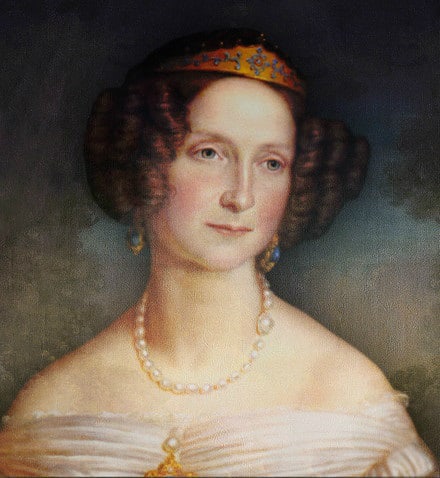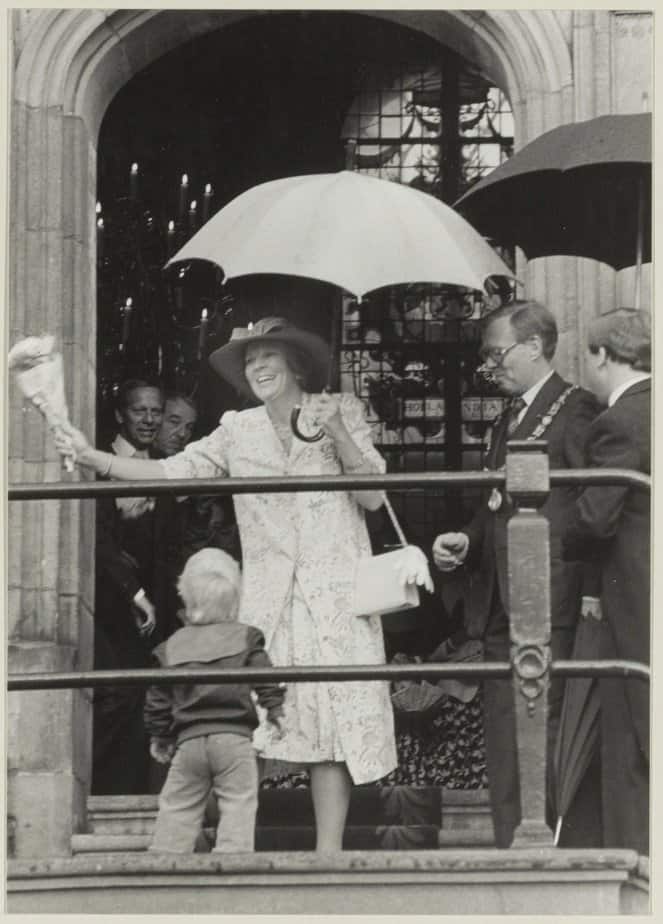5 Famous Dutch Queens
April 30th is Queens Day, a national holiday in the Netherlands. Every year millions of revelers wear the color orange head-to-toe and hit the streets across the nation to celebrate Queen’s Day. The Dutch royal occasion has been commemorated for over 100 years and is the annual official celebration of the Queen’s birthday.
It is an opportunity for celebrants to participate art in open markets, enjoy playing traditional Dutch games with their families, listen to local music and get dressed up in their best orange outfits.
The tradition dates back to 1891, when the holiday was founded to celebrate the August birthday of Queen Wilhelmina. Queen’s Day was moved to April 30 with the coronation of Queen Juliana in 1948, and has remained on that day during the current reign of Queen Beatrix.
Orange is the official color of the Queen and the royal family, descendants from the House of Orange-Nassau that has played a political role in the Netherlands for almost half a millennium. Here is a list of 5 queens that reigned in the Netherlands.
1. Anna Pavlovna of Russia
Anna Paulowna was born in 1795 at Gatchina Palace and was the eighth child and sixth daughter of Paul I of Russia and Empress Maria.
The summer residence of the Romanovs is where Anna was brought up by her mother. She spent her younger years there, Nicholas and Michael, her two younger brothers. Anna received a wide education, that included foreign languages and mathematics. She was good with her hands, and enjoyed handicrafts and painting.
In 1809, after failing to engage her elder sister Ekaterina, Emperor Napoleon I of France asked to marry Anna. Her mother managed to delay her response long enough for Napoleon to lose interest and marry someone else.
Anna instead married the Prince of Orange, who would later become King William II of the Netherlands in 1816. They wedded at the beautiful Chapel of the Winter Palace in St Petersburg.
Her marriage was rocky. From the beginning, Anna considered herself superior in rank to William. In 1829, a number of expensive pieces of her jewelry got stolen. She suspected her spouse of stealing them, as he was deep in debt and mingling with people Anna considered to be dubious. The infidelity of her husband brought tensions between them. They lived separated until 1843.
As a queen, Anna is described as distinguished, arrogant and cold towards the public. She actually learned to speak better Dutch than her often French-speaking husband, but she maintained a strict demeanor and never became very popular as queen. She valued pomp, etiquette and traditional processions and rituals.
2. Sophie of Württemberg
Sophie of Württemberg was Queen of the Netherlands as the first wife of King William III. Born in Stuttgart, her parents were King William I of Württemberg and Grand Duchess Catherine Pavlovna of Russia.
On 18 June 1839 she married her first cousin, the Prince of Orange (later King William III), in Stuttgart with the thought that she would eventually succeed in over throwing him. The pair went back to the Netherlands and established themselves at the Plein Palace before coronation, and after they had become king and queen, they resided at the Noordeinde Palace. They had three children, but the marriage was not successful.
Queen Sophie was a scholar and corresponded with various European academics and retained tight ties with Emperor Napoleon III and Queen Victoria. She conserved and promoted the arts, funded several charities, including animal protection and construction of public parks.
Queen Sophie passed away at Huis ten Bosch Palace in The Hague. She was buried in her wedding dress, as in her view, her life had ended on the day she got married.
3. Wilhelmina Helena Pauline

United States Library of Congress’s Prints and Photographs
On 31 August 1880, Princess Wilhelmina Helena Pauline Maria of the Netherlands, Princess of Orange-Nassau, was born. She was delivered in Noordeinde Palace in The Hague, Netherlands. She was the only offspring of King William III and his second wife, Emma of Waldeck and Pyrmont. Her youth was characterized by a close relationship with her mother and father, and she was especially fond of her father, who was 63 years old when she was born.
She rose to the throne at the tender age of ten under the regency of her mother when William died in 1890. In 1901, she married Duke Henry of Mecklenburg-Schwerin, and together they had a little girl, Juliana. Wilhelmina was credited with strengthening and maintaining Dutch neutrality during the First World War.
After the German invasion of the Netherlands in 1940, Wilhelmina escaped to Britain and commanded the Dutch government in exile. She often gave speeches to the Dutch people over radio and was regarded a symbol of the Dutch resistance. She went back to the Netherlands after its liberation in 1945.
Wilhelmina Helena Pauline Maria was Queen of the Netherlands from 1890 until her abdication in 1948. She ruled for close to 58 years, longer than any other Dutch monarch. Her reign saw the First and the Second world wars, the Dutch economic crisis of 1933, and the decline of the Netherlands as a major colonial power.
Wilhelmina was conscious of what was required of her by the Dutch people and their elected delegates. She was a strong-willed and powerful lady who spoke and acted as she willed.
Increasingly afflicted by poor health after the war, Wilhelmina relinquished power in September 1948 giving Juliana the throne. She resigned to Het Loo Palace, where she passed away in 1962.
4. Queen Juliana
Juliana was the only child of Queen Wilhelmina and Prince Henry of Mecklenburg-Schwerin. She obtained a private education and did international law at the University of Leiden. She married Prince Bernhard of Lippe-Biesterfeld In 1937. Together, they had four children: Beatrix, Irene, Margriet, and Christina.
During the German attack of the Netherlands in the Second World War, the royal family was evacuated to the United Kingdom. Juliana relocated to Canada with her children, while Wilhelmina and Bernhard continued to live in Britain. The royal family returned to the Netherlands after its independence in 1945.
Due to her mother Wilhelmina’s weakening health, Juliana assumed royal duties for a short time in 1947 and 1948. In September 1948 Wilhelmina abdicated and Juliana took to the Dutch throne.
Her reign brought about the independence and freedom of the Dutch East Indies and Suriname. Despite a succession of controversies involving the royal family, Juliana stayed a popular figure among the Dutch.
In April 1980, Juliana abdicated in favor of her eldest daughter Beatrix. When she died in 2004 at the age of 94, she was the longest-lived former reigning monarch in the world.
5. Beatrix Wilhelmina Armgard
Born 31 January 1938, Beatrix is a member of the Dutch royal house who reigned as Queen of the Netherlands from 1980 until her abdication in 2013.
Beatrix is the eldest daughter of Queen Juliana and her husband, Prince Bernhard of Lippe-Biesterfeld. During her mother’s accession in 1948, she became the presumptive heir.
Beatrix went to a public primary school in Canada during World War II, and then completed her primary and secondary education in the Netherlands in the post-war period.
In 1961, she got her law degree from Leiden University. In 1966, Beatrix married Claus von Amsberg, a German diplomat, with whom she had three children. When her mother abdicated on 30 April 1980, Beatrix succeeded her as queen.
Beatrix’s constitutional responsibilities included those generally given to a head of state, including having to sign all legislation before it becomes law, appointing officials, receiving ambassadors, and awarding medals and honors, among others. Besides these duties, her other informal roles included being the highest representative of the kingdom internationally and to being a unifying figure.
Koninginnedag, Queen’s Day, 30 April 2013, Beatrix abdicated in favour of Willem-Alexander, her eldest son.
Planning a trip to Paris ? Get ready !
These are Amazon’s best-selling travel products that you may need for coming to Paris.
Bookstore
- The best travel book : Rick Steves – Paris 2023 – Learn more here
- Fodor’s Paris 2024 – Learn more here
Travel Gear
- Venture Pal Lightweight Backpack – Learn more here
- Samsonite Winfield 2 28″ Luggage – Learn more here
- Swig Savvy’s Stainless Steel Insulated Water Bottle – Learn more here
Check Amazon’s best-seller list for the most popular travel accessories. We sometimes read this list just to find out what new travel products people are buying.













